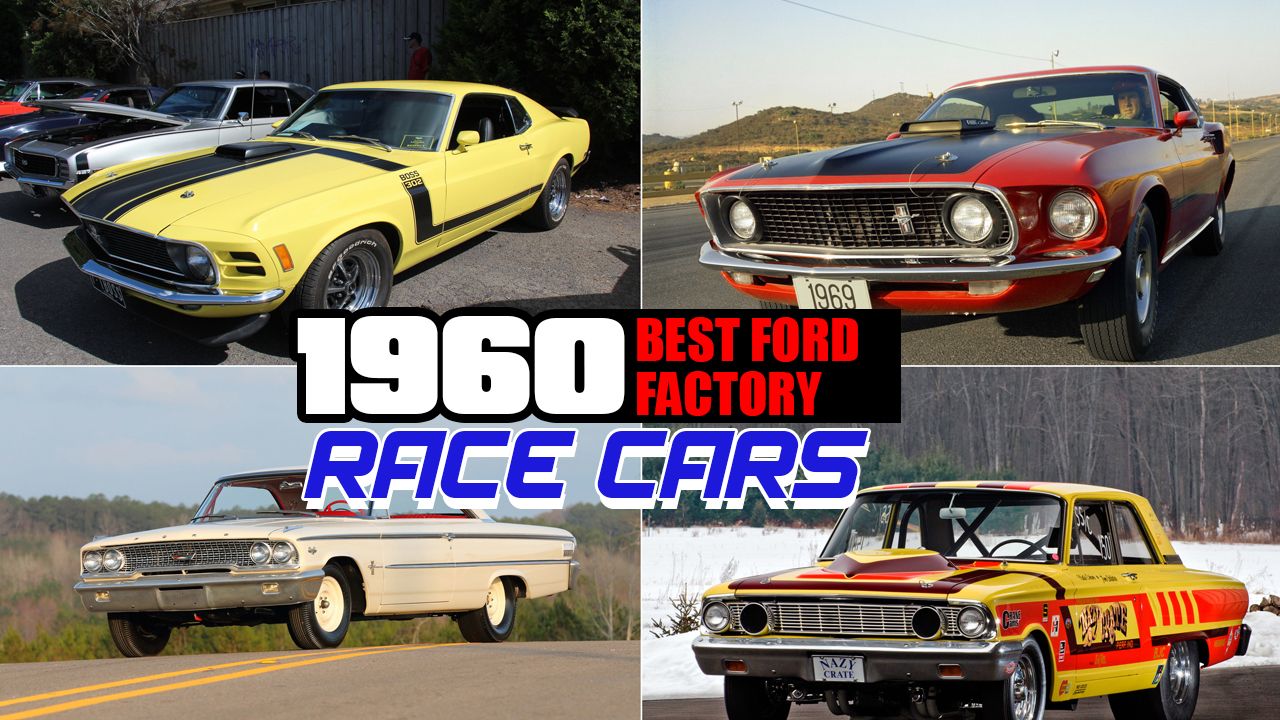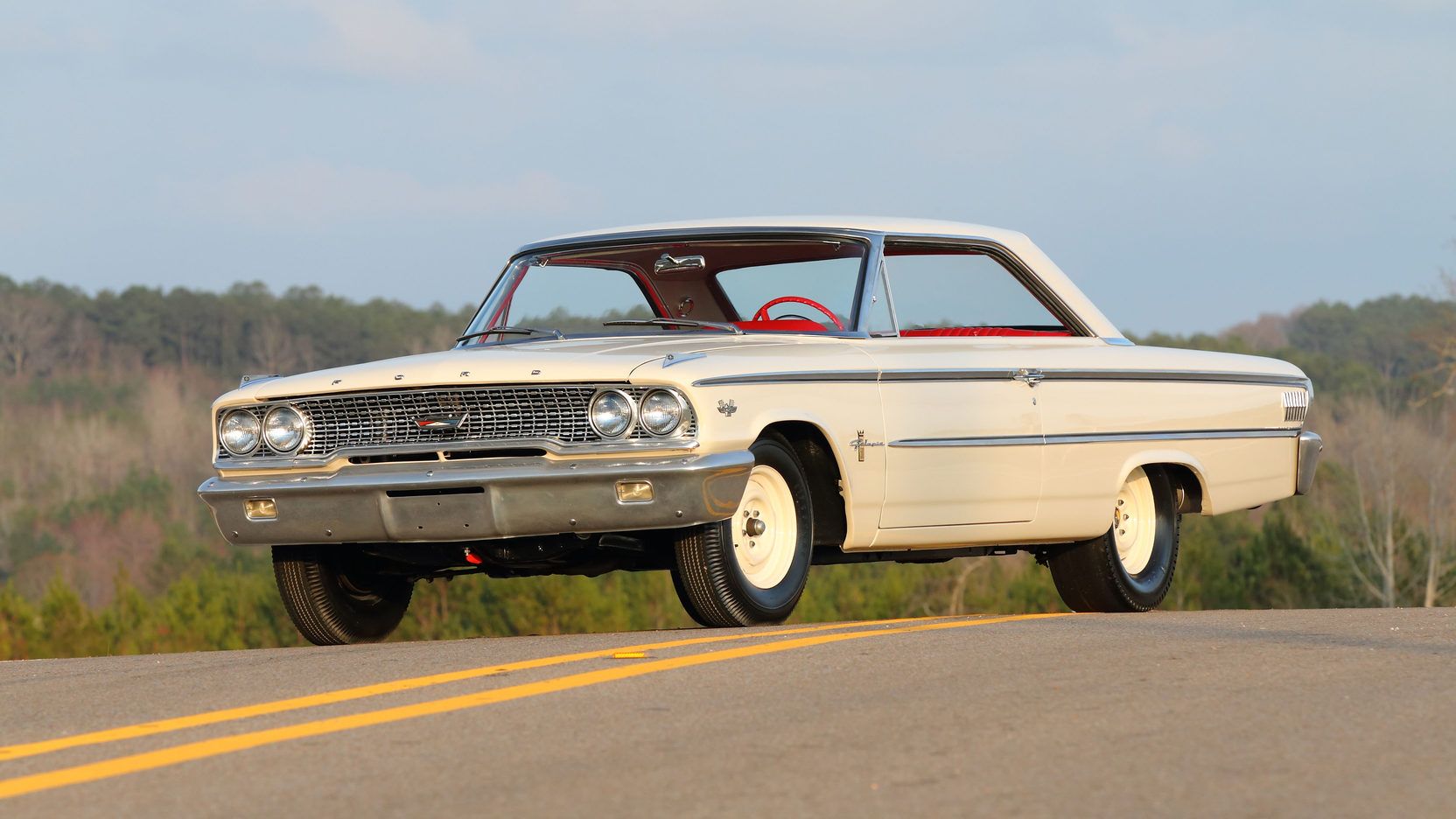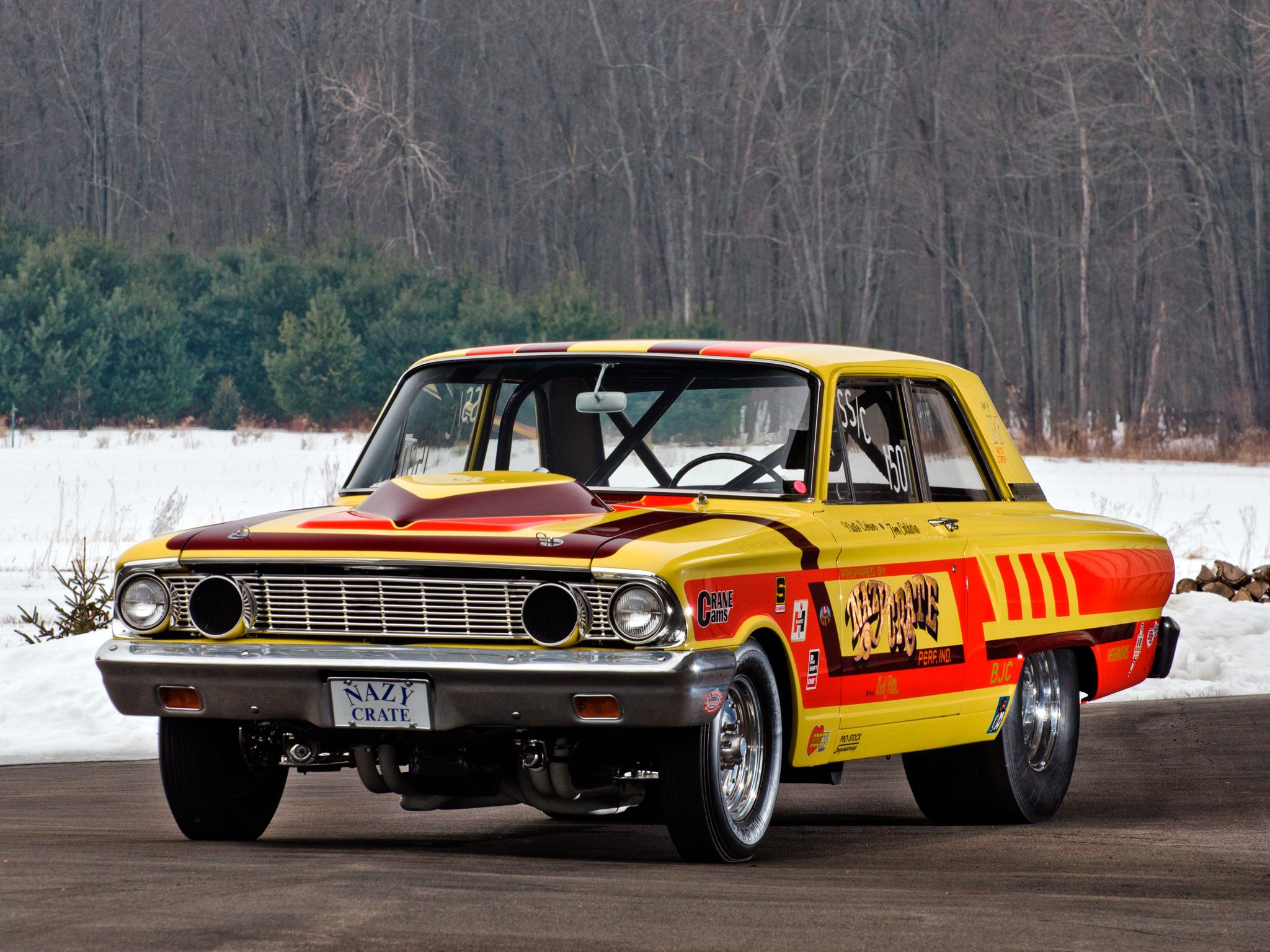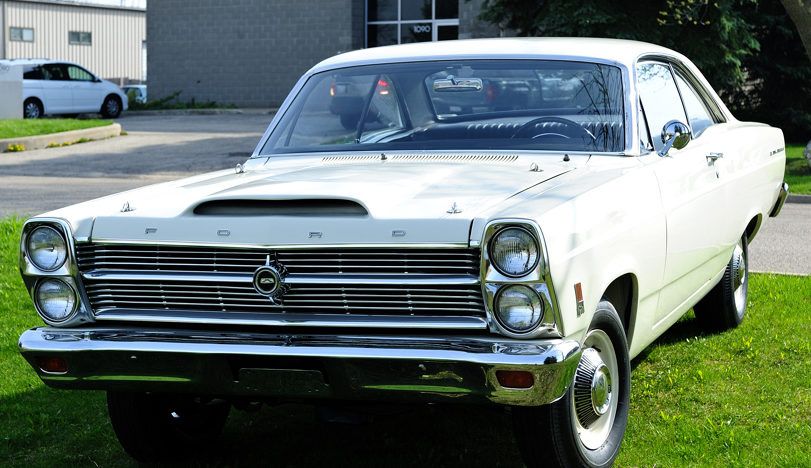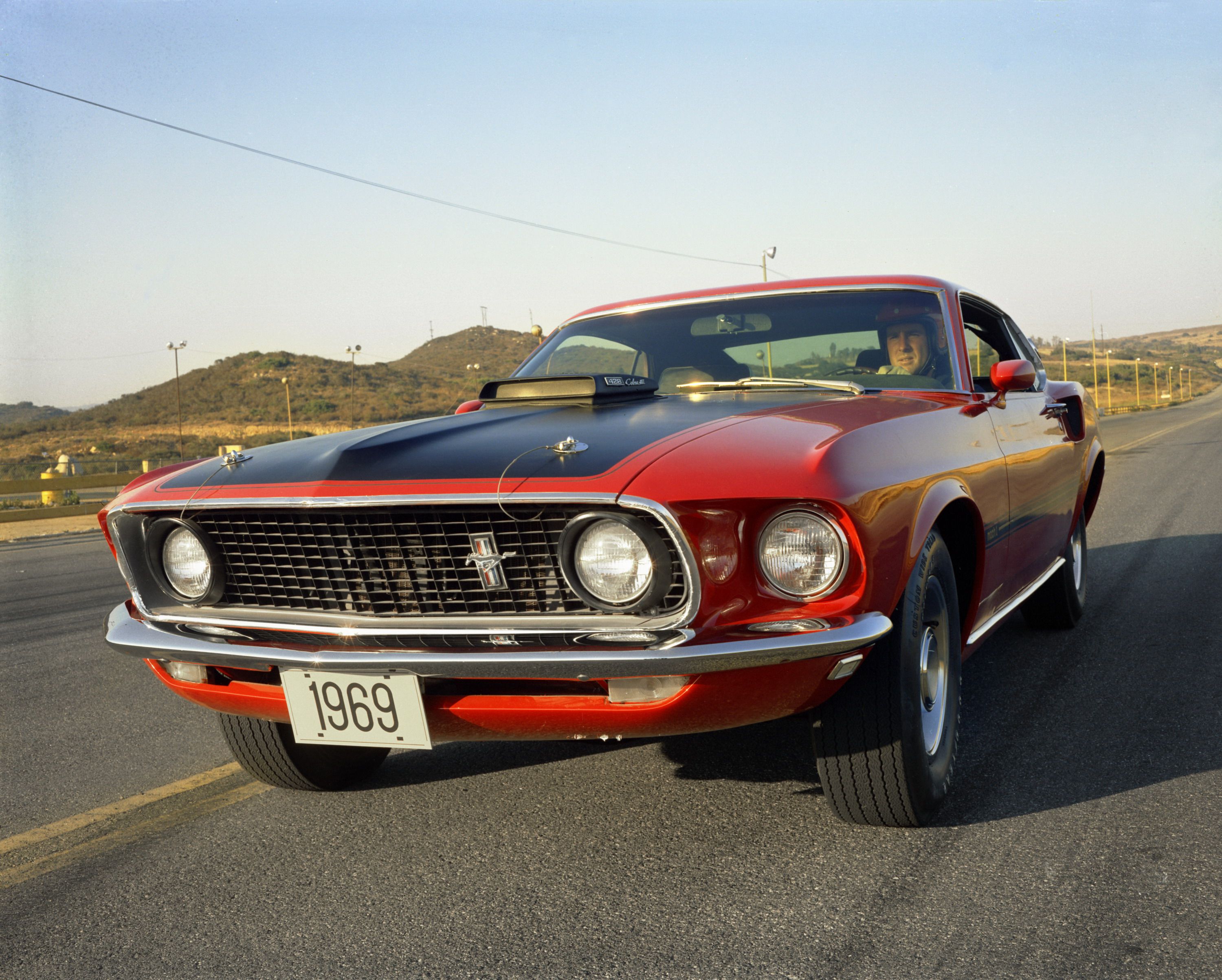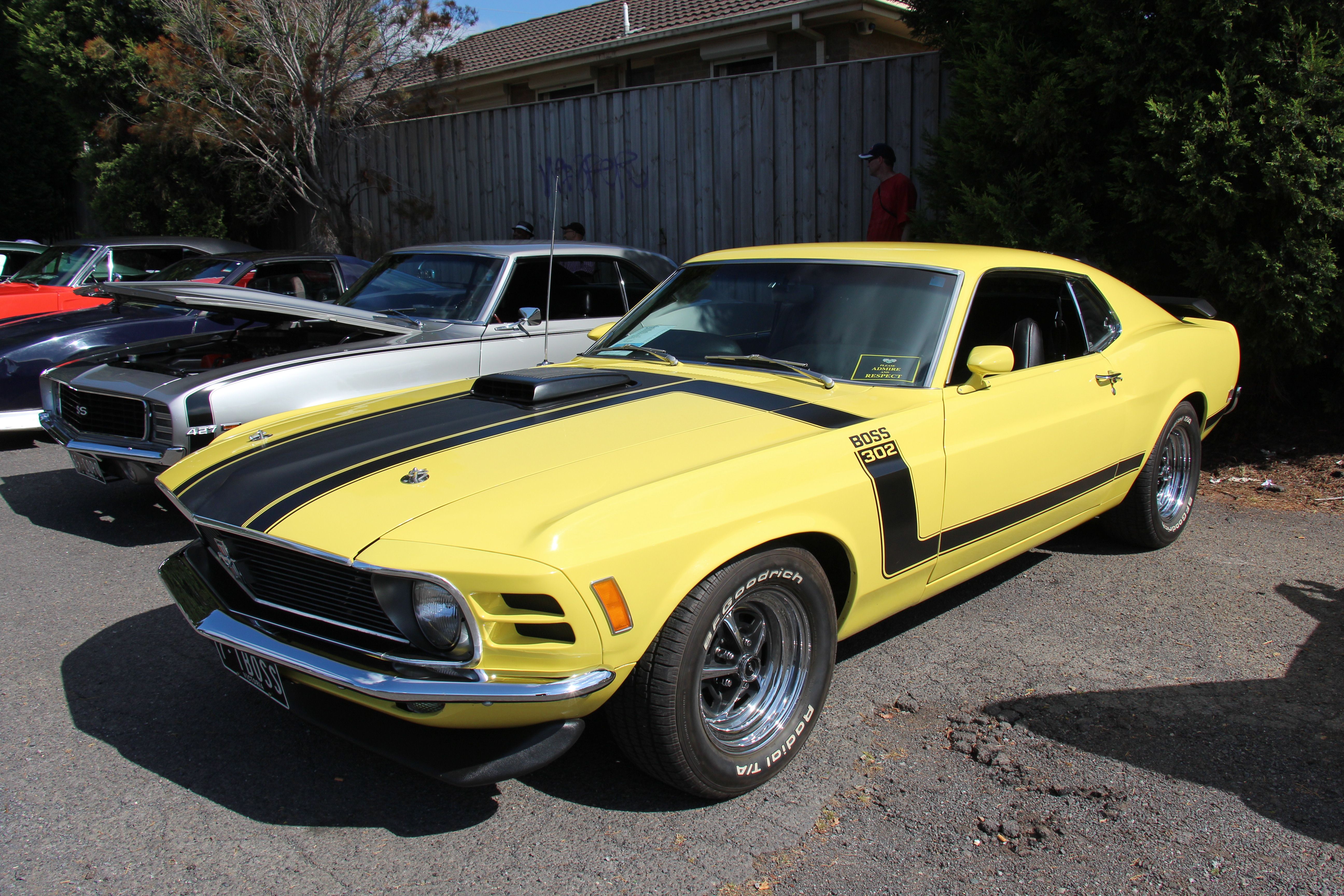Ford, like other manufacturers in the 1960s, wanted to appeal to young car enthusiasts, by giving them souped-up versions of their regular models meant for drag and oval racing. Motorsport was still a popular way for carmakers to advertise themselves and their cars and the “win on Sunday, sell on Monday” mindset was still going strong, which spawned a variety of Ford homologation cars, available to the general public. Not long ago, we covered GM’s approach to factory race cars and Ford, naturally, responded with these hot versions of its cars.
1963.5 Ford Galaxie 500 Lightweight
In mid-1963, Ford wanted to make its full-size Galaxie even faster. Regulations at the tie stated that no engine bigger than 7.0 liters (425 to 430 cubic inches) could be installed in a mid-size or full-size car. Ford had already put the R-code 427 V-8 with dual Holley, four-barrel carburetors. The pushrod was rated at 425 horsepower and was mated to a BorgWarner T10, four-speed manual.
Ford’s solution for extra performance was to add lightness. All steel body panels, like the fenders, trunk, and hood, were replaced with fiberglass ones, while the steel bumpers were replaced with aluminum versions. Moreover, the entire frame was replaced with a lighter version, intended for the six-cylinder version of the car, and inside, all non-essential equipment was removed. A total of 212 Ford Galaxie 500 Lightweight were built, all of which were finished in Corinthian white and featuring red vinyl interiors.
1964 Ford Fairlane Thunderbolt
Less than a year after Ford came up with the Galaxie 500 Lightweight, they did the same thing with the mid-size Fairlane. The same 427 cubic-inch V-8 rated at 425 horsepower at 6,000 RPM and 480 pound-feet (650 Nm) at 3,700 RPM was put to work here, mated to the familiar BorgWarner T10, four-speed manual. The Super Stock version of the car put out 650 horsepower.
The Thunderbolt featured Ford’s standard lightweight treatment, consisting of fiberglass body panels and the removal of unnecessary equipment. The street version could sprint from 0 to 60 mph (97 km/h) in 4.7 seconds. The curb weight was reduced to 3,225 pounds (1,464 kg). A total of 100 Ford Fairland Thunderbolts were produced in 1964.
1966 Ford Fairlane 500 XL Lightweight
The next-generation Ford Fairlane, from 1966, also got the same treatment as its 1964 predecessor. The tried and tested 427 side-oiler V-8 was still put to work here, still rated at 425 horsepower and 480 pound-feet (650 Nm). That said, for the 1966 Fairlane Lightweight, the 427 got a 13.2:1 compression ratio, and a high-lift camshaft. The gearbox was a four-speed Toploader manual.
The rest of the treatment involved the usual removal of unnecessary equipment, including much of the sound deadening, and fiberglass body panels. The 1966 Ford Fairlane 500 XL Lightweight was built for NHRA homologation and only 57 units were made. While the exterior design was not the main highlight of Ford’s factory race cars, the Fairlane 500 Lightweight could be had in any color, as long as it was white. The 427 Lightweight treatment added over $2,000 to the price of the base car.
1969 Ford Mustang BOSS 429
The 1969 Ford Mustang BOSS 429 was never meant to be a full-on race car. Its purpose was to homologate the 429 cubic-inch V-8, which would be used in the full-size Ford Torino and Mercury Cyclone twins in order to stand a chance against the Dodge Charger Daytona and Plymouth Superbird aero-body MOPARs at NASCAR. Since the body of the Mustang wasn’t big enough to accommodate the big V-8, Ford subsidiary KarKraft was hired to modify the car.
The engine featured a mild camshaft, smog pump, and a small carburetor. It was rated at 375 horsepower at 5,200 RPM and 450 pound-feet (610 Nm) at 3,400 RPM although the numbers are believed to be underrated. With a few tweaks, however, output could go up to 600 horsepower. The engine made for terrible weight distribution, to the point where Ford was working on a mid-engine BOSS 429. In two years, 1,357 BOSS 429 were produced.
Read our full review on the 1969 Ford Mustang BOSS 429
1969 Ford Mustang BOSS 302
Like the BOSS 429, the BOSS 302 was based on the 1969 to 1970 Ford Mustang. Unlike the BOSS 429, which was a NASCAR homologation, the BOSS 302 was homologated for Trans-Am road racing, which limited displacement to 305 cubic inches (5.0 liters). Ford’s 302 small-block was rated at 290 horsepower at 5,800 RPM and 290 pound-feet (393 Nm) at 4,300 RPM. The transmission was, exclusively a four-speed Toploader manual and came with a set of 3.91 gears.
KarKraft, Shelby American, and NASCAR owner Bud Moore were involved in developing the racing variant, which featured performance aluminum heads, two Holley Dominator, four-barrel carburetors, and various other changes from the street version, bumping output to 470 horsepower. The car wasn’t built for drag racing, but still managed a respectable 12.9-second quarter-mile time. The total production ended after 1,628 units, including 10 race cars.
Read our full review on the 1969 Ford Mustang BOSS 302
1964 Ford GT40
The Ford GT40 is one of the most iconic American cars ever made. While all the previous models were passenger and muscle cars, this was an all-out race car, designed to go toe to toe with Ferrari, at LeMans. After a few unsuccessful tries, the Ford GT40 won LeMans three times in a row, ending Ferrari’s winning streak. The Ford GT40 also had a street-legal variant, featuring wire wheels, carpeting, and luggage space, and was offered as both left-hand drive and right-hand drive.
Like the race version, the road-legal GT40 was powered by a variety of Ford V-8 engines, ranging from 4.2 to 7.0 liters (255 – 427 cu in), and was based on the Lola Mk VI chassis. The street versions were based on the Mk I and Mk III variants and had a five-speed ZF manual transaxle. A total of 31 Mk I and seven Mk III street cars were produced. By comparison, 105 GT40s were built for racing purposes.
Read our full review on the 1964 Ford GT40

